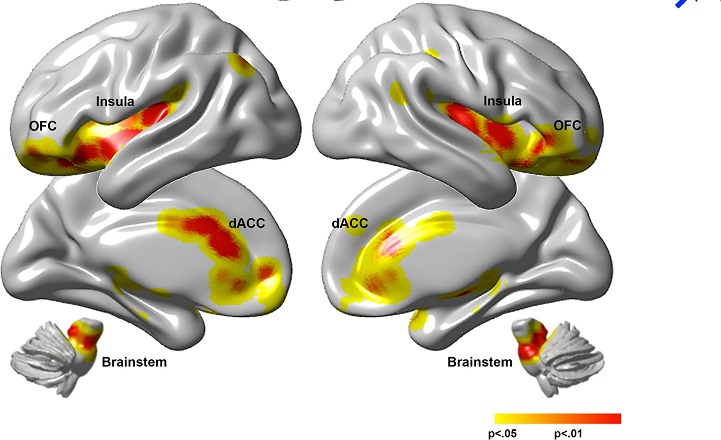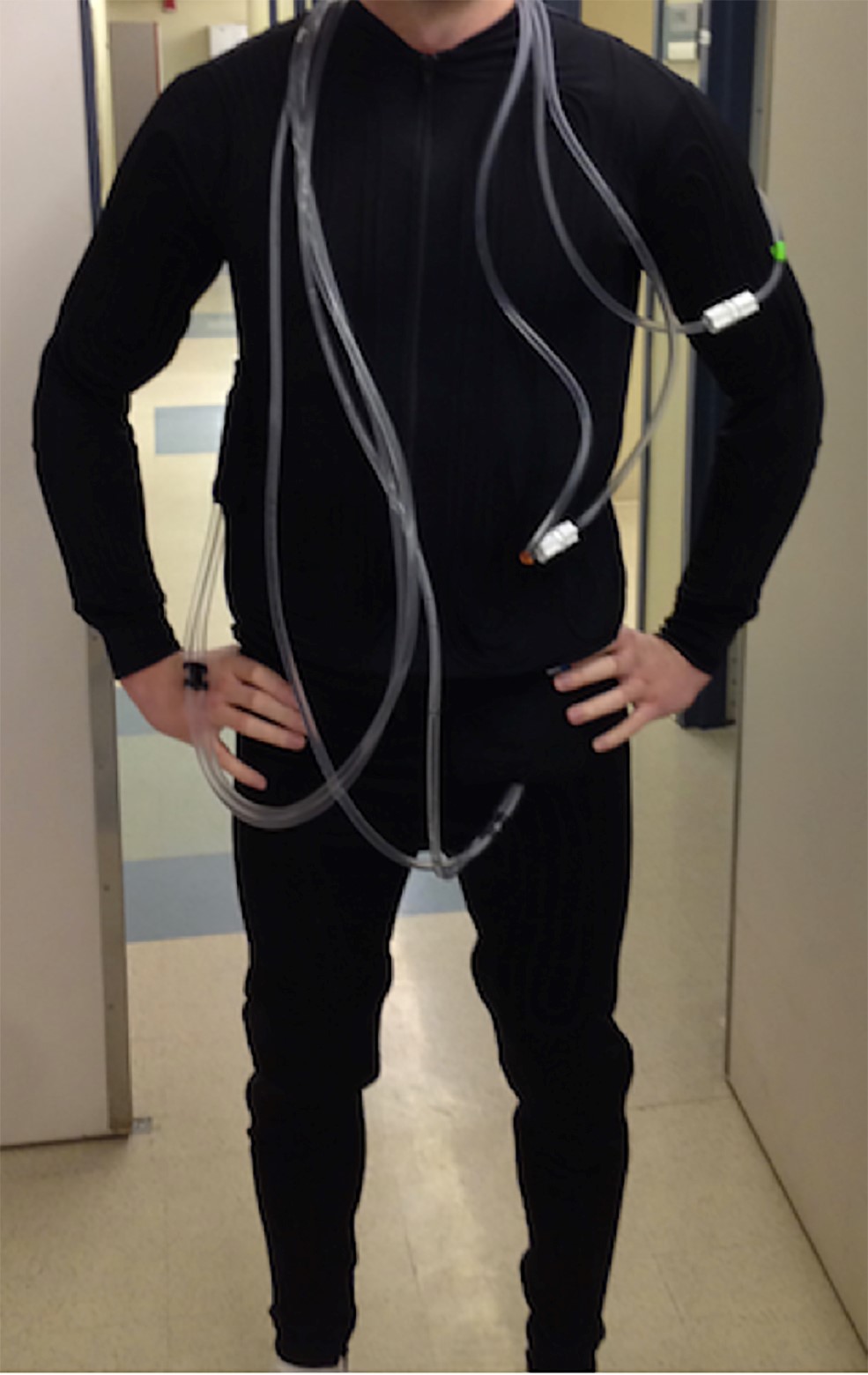
Researchers at the Wayne State University School of Medicine have published the first study to reveal specifically how brain networks respond when humans are made to feel cold.
Professor of Pediatrics, Radiology and Neurology Otto Muzik, Ph.D., and Professor of Psychiatry and Behavioral Neurosciences Vaibhav Diwadkar, Ph.D., are two of only a handful of researchers worldwide who have been able to study human brain responses under safe and experimentally controlled conditions of whole-body cooling.

“Cooling presents an immediate and serious threat to our survival. It evokes sympathetic responses which prime the body for what has been called a ‘fight or flight’ behavioral response. Unlike species like reptiles, humans must deal with cold by engaging in behaviors that mitigate the effects of cold,” Dr. Diwadkar said. “Therefore, it has been suggested that sympathetic responses must activate more complex functional network pathways in the human brain – compared to para-sympathetic responses that are activated during comfortable re-warming.”

This widely accepted idea has never been demonstrated using experimental methods in humans.
Yet, in “Effective connectivity of brain networks controlling human thermoregulation,” a new paper published in the journal Brain Structure and Function, Drs. Muzik and Diwadkar demonstrate exactly that.
Using Dynamic Causal Modeling, or DCM, a method used to discover causal brain network interactions from fMRI data, they show that brain network interactions evoked during mildly unpleasant whole body cooling are much more complex than those evoked during comfortable re-warming. DCM has been extensively used by fMRI researchers to discover causal brain network interactions evoked by any range of experimental manipulations, but never in the context of human thermoregulation.

During the studies, 30 volunteer participants from the metropolitan Detroit area wore a specifically-designed whole-body suit that the researchers could infuse with temperature-controlled water. The resultant changes in body temperature were carefully monitored (using skin sensors) while the fMRI data were being collected. Subsequent DCM analyses of each participant’s fMRI data was based on changes in their body temperature.
Dr. Muzik indicated that the results were striking. “We show that sympathetic responses drive parallel brain network pathways emerging from homeostatic centers in the brain stem. One pathway expectedly goes from the brain stem to interoceptive centers like the insula that code how we ‘feel’. The other, goes directly from the brain stem to executive centers, like the dorsal anterior cingulate and the orbitofrontal cortices, that motivate how we act,” he said.
The parallel pathways are clear functional signatures of the complexity of sympathetic responses in brain networks.
“These studies are challenging to conduct because you need an experimental paradigm for safely cooling and re-warming the body while you are collecting brain responses with fMRI,” Dr. Muzik said. “But, by tailoring the DCM analyses as we did, we were able to reliably derive brain network signatures of both sympathetic (cooling) and para-sympathetic (re-warming) responses.”
“We speculate that our discovered parallel pathways form the basis for the quick and efficient implementation of behavioral plans to mitigate the effects of cold,” Dr. Diwadkar said. “To our knowledge, this is the first demonstration of the hypothesized complexity of human brain functional network interactions evoked by sympathetic responses. Almost all previous in vivo work has thus far been done in animal models. Our results suggest that behavioral thermoregulation is the cumulative principle for how the human brain manages its core body temperature, and this principle allows the human species to range over an unusual number of hostile environments.”
Dr. Muzik, a medical physicist who specializes in MRI and Positron Emission Tomography and Dr. Diwadkar, co-director of the School of Medicine’s Brain Imaging Research Division, have collaborated in this area of work for many years. The current study is the latest in a series of significant papers they have published. Other papers include a well-cited 2018 study of Wim “The Iceman” Hof’s brain during cold exposure, papers on how the brain responds when menopausal women experience hot flashes, papers documenting relationships between brain responses and the activation of brown adipose tissue, other investigations of brain networks, and theoretical treatises.
“The brain must take the cold very seriously, because of what is potentially at stake: death through eventual hypothermia,” Dr. Muzik said. “These results demonstrate the beauty with which human brain networks efficiently organize their responses to thermoregulatory threat.”
Data collection was supported by a previous award from the National Institute of Diabetes and Digestive and Kidney Diseases. Drs. Diwadkar and Muzik’s efforts, and those of study research assistants Shahira Baajour and Asadur Chowdury, were supported by grants from the National Institute of Mental Health.